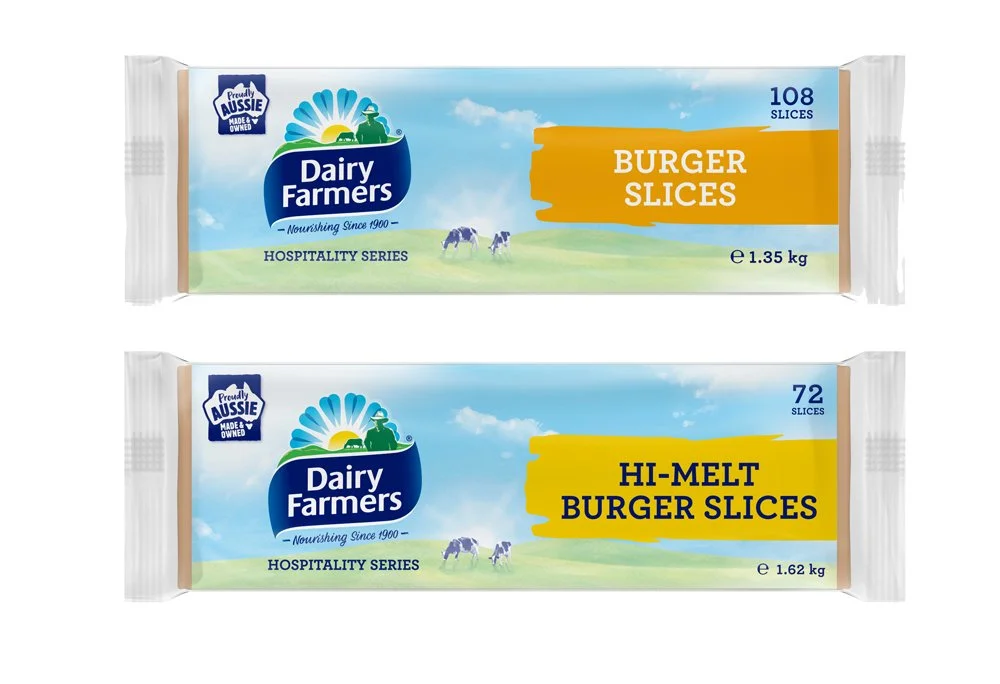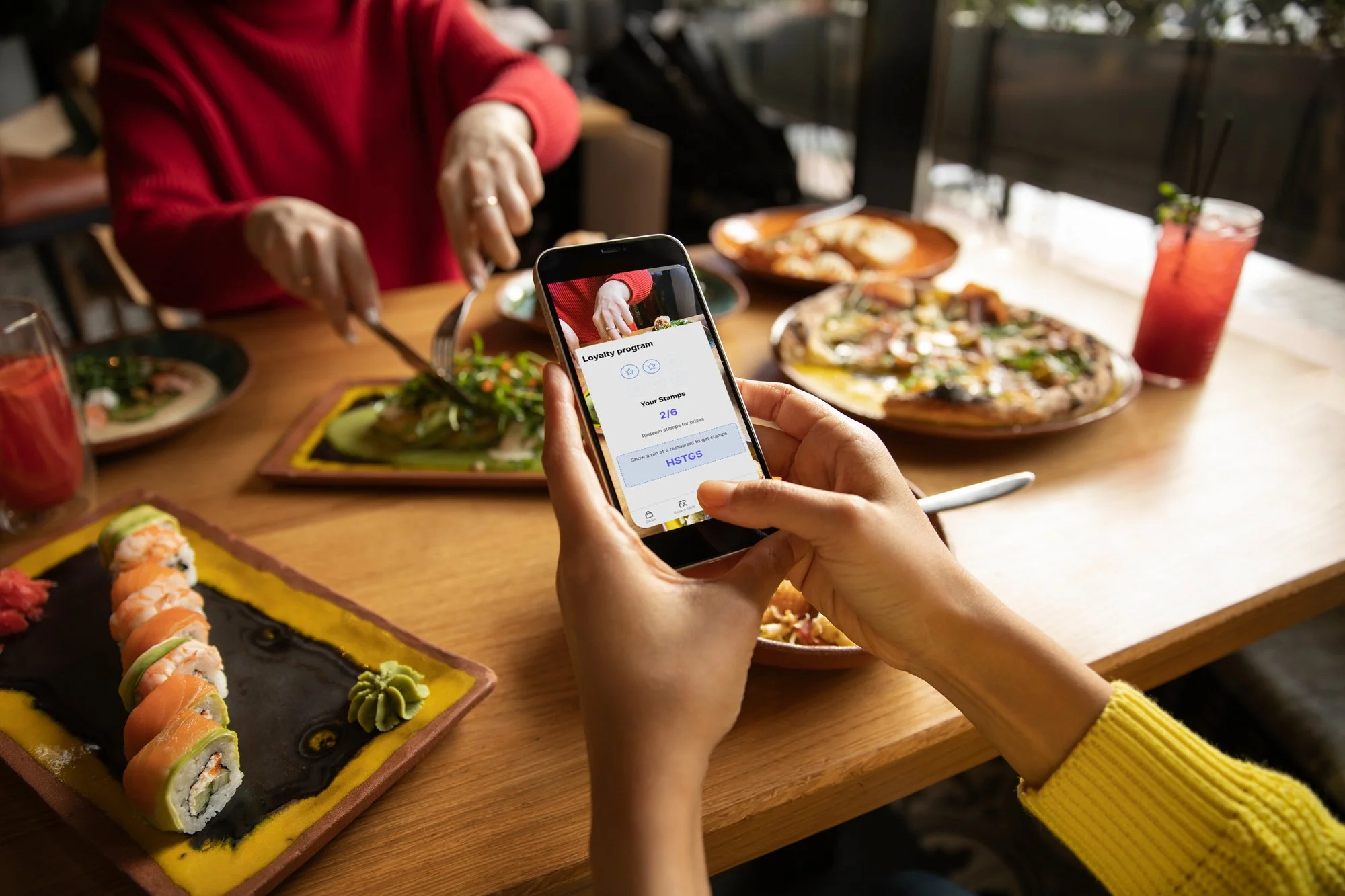CHEF TIPS
Choose the right cheese to ensure a memorable burger
The once-humble burger has today become a menu mainstay and proven itself to be a remarkably versatile menu option. You can find more varieties of burger than ever before across venues from takeaways and dedicated burger bars to cafes, pubs, clubs – even upmarket restaurants have got in on the act.
“Regardless of whether the core protein ingredient is beef, lamb, pork, chicken, turkey, fish or plant-based option, the secret to a memorable burger is to ensure the other ingredients complement and balance the protein’s flavour, texture and mouthfeel,” says chef Adam Moore.
“And as cheese is one the most important elements in many burgers, choosing the right cheese is imperative for visual appeal, taste and customer satisfaction.”
Adam says your choice of cheese should not only complement the flavour of your protein, but the look of the burger. “There’s nothing like the sight of melted cheese drizzling from a burger to enhance its overall appeal. At the same time, you don’t want the cheese to be too messy when you go to eat it.”
“Cheese is one the most important elements in many burgers, choosing the right cheese is imperative for visual appeal, taste and customer satisfaction.”
The starting point is to choose a cheese with an appropriate melt point. “When you put the cheese on the grill it needs to be able to withstand that heat,” Adam explains. “A slice of cheese which goes soft and starts melting all over the grill almost immediately is not good because you end up losing half of it. It just melts away.”
Nor should you simply use your everyday sandwich cheese choices on burgers. “They’re great for sandwiches, but on burgers they tend to sweat and not deliver an even melt. And when they do melt, they may become almost transparent, which is not want you want on a burger. If your customer’s paying for a double cheeseburger, for example, they’ll want to be able to see the cheese – every slice of it.
Adam argues a great burger cheese is designed to adhere to the meat and hold all the other filling ingredients together. “At the same time, you want a genuine cheese taste and texture, not overly processed. You want that taste and texture and flavour complexity coming through. Ideally the cheese works to balance all the ingredients so you can taste everything that’s in the burger with every bite.”
“They have a flavour complexity with strong aged cheddar notes which is deal for burgers. And they deliver a smooth mouthfeel which is never rubbery and doesn’t feel overly processed.”
Dairy Farmers has two great cheese products which fit the bill – Dairy Farmers Burger Cheese Slices and Dairy Farmers Hi Melt Cheese Slices (for when you need an even higher melting point, such as in the most demanding commercial kitchen environments).
Both are the perfect choice for burger buns, designed to melt evenly for a smoothly textured mouthfeel while enhancing the overall taste of the protein and holding all the other fillings together.
The higher melting point of Dairy Farmers Hi Melt Cheese Slices also makes them ideal for grilled sandwiches and pizzas cooked in high-pressure environments where you need to ensure a perfect melt and uniform stretch.
“Both these cheeses have an attractive deep orange hue which ties into the American burger cheese trend,” Adam says.
“They have a flavour complexity with strong aged cheddar notes which is deal for burgers. And they deliver a smooth mouthfeel which is never rubbery and doesn’t feel overly processed. It’s cheese that tastes like cheese – authentic quality, texture and taste that will deliver the burger experience to keep your customers coming back.”
LISTEN
Inside Foodservice - Securing Cost efficiencies
When it comes to securing cost efficiencies, chef Gary Johnson uses the analogy of flying an aircraft – if you increase the altitude, you have to cut back on the fuel. Whatever adjustments you make in one area of your business will impact somewhere else, so it’s all a question of balance.
WATCH
Why Mary’s uses Dairy Farmers Burger Slices
Jake, Co-owner of Mary’s in Newtown shares why Dairy Farmers Burger Slices are a key ingredient for his American style burger operation.
OPERATIONS
Latest tech makes customer loyalty programs easier to utilise than ever
The old days of hole-punched customer loyalty cards have been replaced by mobile order apps with built-in loyalty program components, allowing customers to keep track of how many meals they’ve bought and how many loyalty points they’ve yet to earn before they can claim a reward.
Technological innovation has made it easier than ever to create a loyalty program that will work for your business. Here are some examples of how you can leverage today’s tech to boost customer engagement, consolidate loyalty and generate repeat business.
GAMIFICATION
This means promoting your foodservice brand and its menu offering by turning customer interactions into a game featuring competition and rewards. Your rewards program can be designed to highlight competitive elements – for example a progress bar to track the customer’s rewards points on your order app, and the use of $ icons or stars to represent the points themselves.
Bonus wins, such as the opportunity to score a free meal or extra rewards via random pop-ups when the customer interacts with the app, can help underscore this feeling of participating in a game. You might also offer double rewards points for certain days/times of the weeks or mealtimes. It’s all about generating a sense of fun. Making it entertaining for customers to interact with the rewards program is a great way to boost their engagement.
MOBILE PAYMENT INTEGRATION
With the popularity of contactless payment having soared during Covid, your customers expect to be able to access mobile payments with minimal steps when using phone apps and this also extends to integration with your loyalty program.
Integrating mobile payments directly into your order app not only means customers don’t have to log in a second time to pay and can complete their purchase seamlessly. It also ensures they can easily generate their reward points without additional login screens or separate sections.
OPPORTUNITIES FOR CUSTOMER INTERACTION
Customers enjoy feeling special and tech innovation has made it easier to interact with them in a meaningful way. You can utilise marketing automation software to automatically respond to customer interactions with your brand on social media, such as when they post a selfie of themselves at your café or restaurant on Facebook or a photo of their meal on Instagram.
Identifiers including hashtags of your brand name or sharing the web address of your menu or business can generate automatic responses. These can also be tailored depending on whether the customer is or isn’t already enrolled in your loyalty program – those who are might receive bonus points, while those who aren’t can be sent an invitation to sign up.
DIGITAL PROMOTIONS
Transaction data captured as part of your order app helps you build a profile of your loyalty program members, making it easier to tailor your marketing to each customer based on their interests and preferences.
You can then run digital promotional activities via your loyalty program which will enable you to track customer click-throughs and redemption rates – letting you know when, how often and how much they order from your business. This makes identifying opportunities for upselling easier and lets you personalise your relationship with each customer based on their preferences.
ADVICE
Four eco-friendly trends set to shake up the foodservice sector
We all know that health awareness is growing among consumers, especially Millennials and Gen-Zers: they’re choosing smaller portions, less deep fried food and more ‘clean label’ offerings. Their concerns are not only personal but global: food sustainability is an important consideration for them, as is the provenance of their meal choices. They want to know where the ingredients have been sourced from and that their food has been produced humanely and sustainably.
Waste reduction, natural choices and menu transparency are all becoming increasingly important to foodservice businesses. Here are 4 eco-friendly trends you can expect to see more of in the future.
1. Cleaner Food Choices
Natural products – such as those free from artificial preservatives, flavours and colours – are becoming more and more prevalent on menus, as foodservice professionals alike increasingly seek out suppliers who can provide natural alternatives in response to rising consumer demand. It’s also the case that customers are often willing to pay a premium price for these ‘clean’ menu choices, especially if they are marketed as such.
2. Transparency on Food Provenance
Increasingly, customers want to know where their food has come from. You can use this as a selling point of the menu – such as by building a story around your hero ingredients, and instructing staff on how to use this as a means of interacting with customers and educating them about your business’ commitment to sourcing quality produce.
You should also talk to your suppliers to find out more about the provenance of the ingredients and produce you buy. The more you know about your food – from the regions where your milk and cheese is sourced and processed, to the farmers who grow the potatoes from which your fries are made – the more you have to share with customers and build your sustainability credentials.
3. Waste Management and Resource Conservation
Making sure staff in charge of ordering food understand the principles of food rotation, such as FIFO (First In, First Out) helps ensure the freshness of produce and minimises unnecessary waste.
You should also have practices and procedures in place to ensure recipes are prepared to exact specifications each time, and train staff to perform meal preparation consistently.
It’s also a good idea to appoint a key staff member to organise inventory and put in place back-office software for invoicing, reporting and stock management, making it easier to track all inventory in real time.
Encourage back of house staff to maximise yield of each ingredient, such as by repurposing vegetable leftovers that would otherwise be thrown away, for example in sauces, stocks and stews.
4. Use of ‘Snout to Tail’
In keeping with the focus on sustainability, the popularity of what Meat & Livestock Australia calls ‘secondary cuts’ continues to grow.
Choices such as beef cheeks, hanger steaks, organ meats and bone marrow are increasingly being used on the menu as creative chefs experiment with these cheaper yet flavoursome cuts. Some of these items, once dismissed as throwaways or labelled disparagingly as offal, are now considered delicacies – and it’s all down to the innovative ways in which they’re being used to ensure the kitchen gets maximum use out of every component of the animal.







